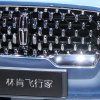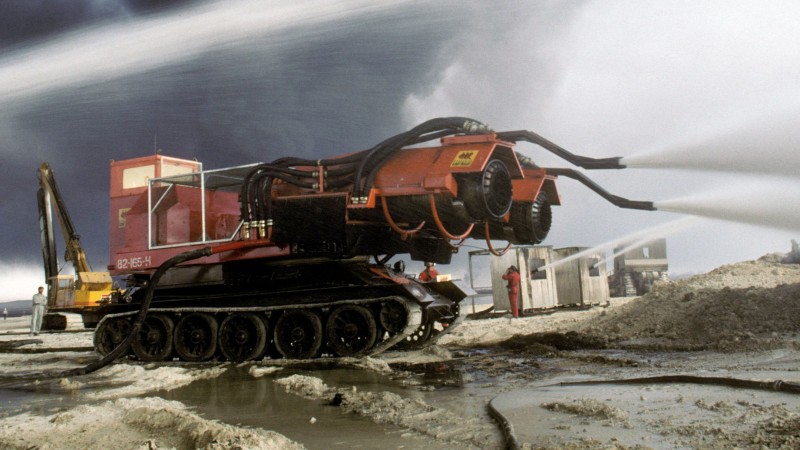
This Jet Engine Tank ‘Big Wind’ Can Smother Any Fire
This is the mother of all fire extinguishers. It was created to put out burning oil wells. It was the result of the Iraqi retreat during the first Gulf War. The retreating armies lit hundreds of the oil wells in Kuwaiti, and that turned them into giant fountains of fire, almost impossible to put out. Around Kuwaiti, the skies turned black for months.
Where did Big Wind come from?
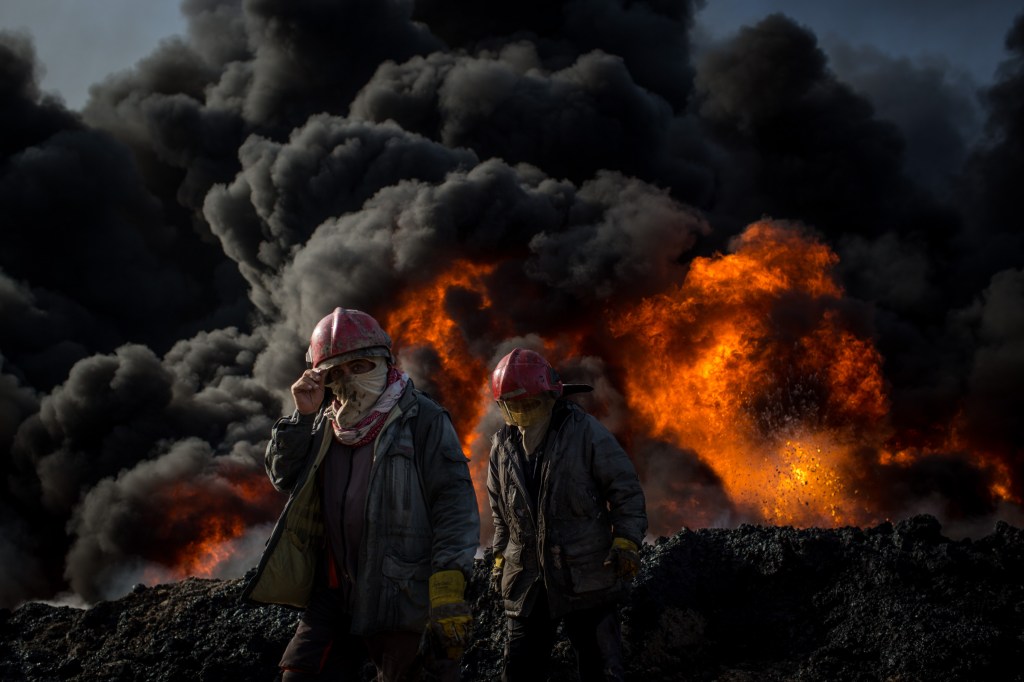
That’s partly because they are extremely difficult to extinguish. And that set the stage for Big Wind, according to hackaday. A firefighting team from Hungary came up with Big Wind based loosely around a similar tank conceived by the Soviet Union.
The Soviets strapped a MIG-15 jet engine to a large ZIL truck. Pumping water into the engine’s exhaust created a torrent of high-pressure water and air that was directed at the fire. In 1968 one of these jet tanks was put to the test at a large oil well fire in Hungary.
Big Wind pours 27,000 pounds of water pressure thrust
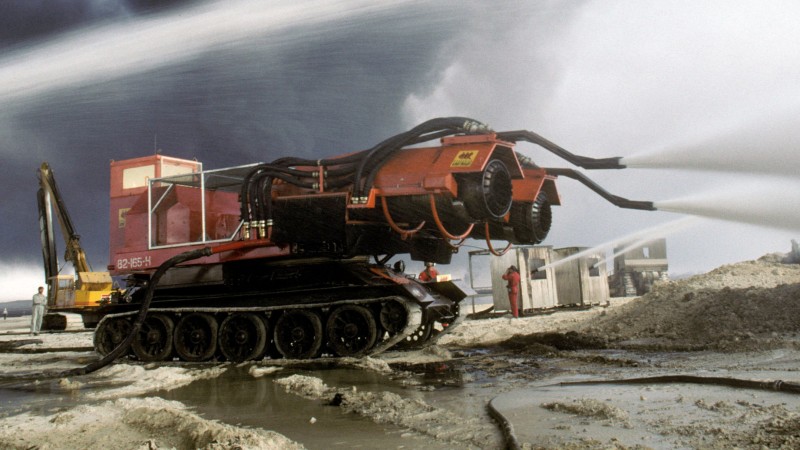
Since then, a drilling company outside of Budapest developed what has become Big Wind. Two Tumansky R-25 turbojets from a MIG-21 fighter jet slam 27,000 pounds of thrust mixed with 220 gallons of water per second. Big Wind came together just as hundreds of oil wells were on fire in Kuwaiti. To begin extinguishing the fires, Big Wind was sent by aerial transport.
What it faces is oil under pressure gushing out of the oil well, with the primary flame anywhere from 15 to 30 feet above the ground. The atmosphere can climb to 650-degrees, with the sand below reaching up to 1,300 degrees. With all of that water pressure, it cuts off the oil from getting up to the flame.
Big Wind also cools the atmosphere and the ground preventing reignition
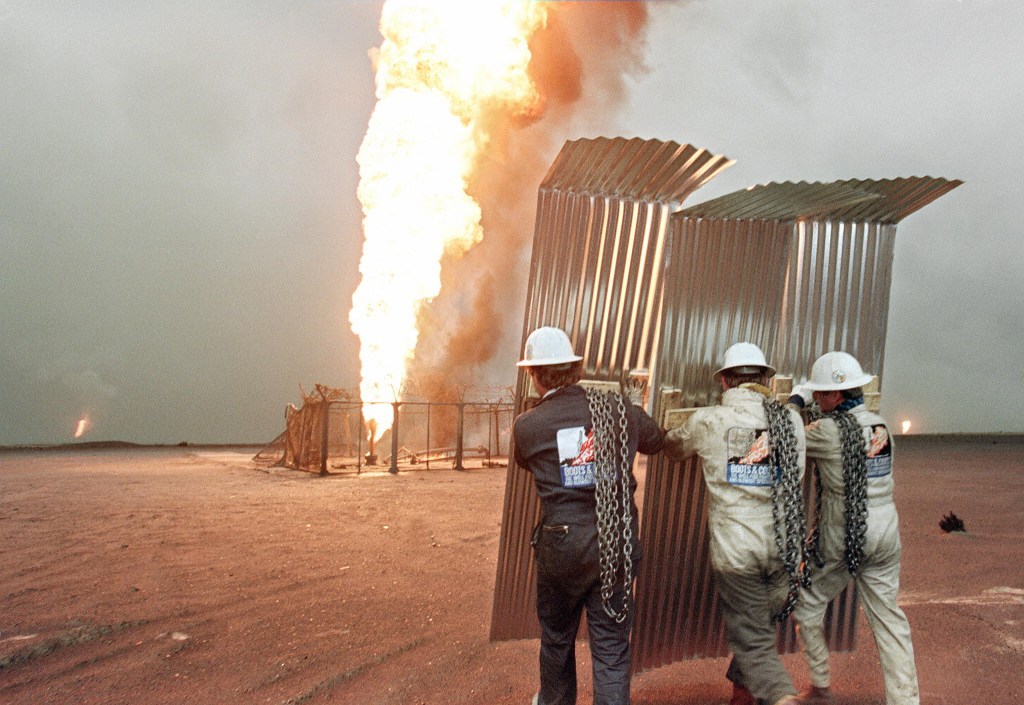
A secondary benefit is that the blast cools down the surrounding atmosphere. The Big Wind operators keep the water blasting for 20 minutes after the fire is extinguished to cool the surrounding sand. That’s done so that once the oil shoots back out of the well, it doesn’t reignite after landing on the hot sand.
A driver and two crew members man Big Wind. One operates the water nozzles, while the other directs the two from a short distance via wired controls. Huge diesel-powered water pumps shoot water from the Arabian Gulf to nearby reservoirs using oil pipelines running in reverse.
Once the fire is snuffed, capping the well begins
Big Wind is then navigated to within 25 feet of the oil well. A fire is quickly put out with the jet engines at 70-percent throttle and the water blasting the fire. Now the crew tasked with capping the well can begin their work.
In the US, we go with pumping thousands of gallons of water onto the well to put it out. That or explosives are used to crudely cap the well. The downside to machines like Big Wind is that they can cause extreme damage and the potential for injuries in a more urban setting as we have here. But out in the desert, there are no such worries. It’s one of those creations that you hope never needs to be used, but you’re glad it is there when you do.


